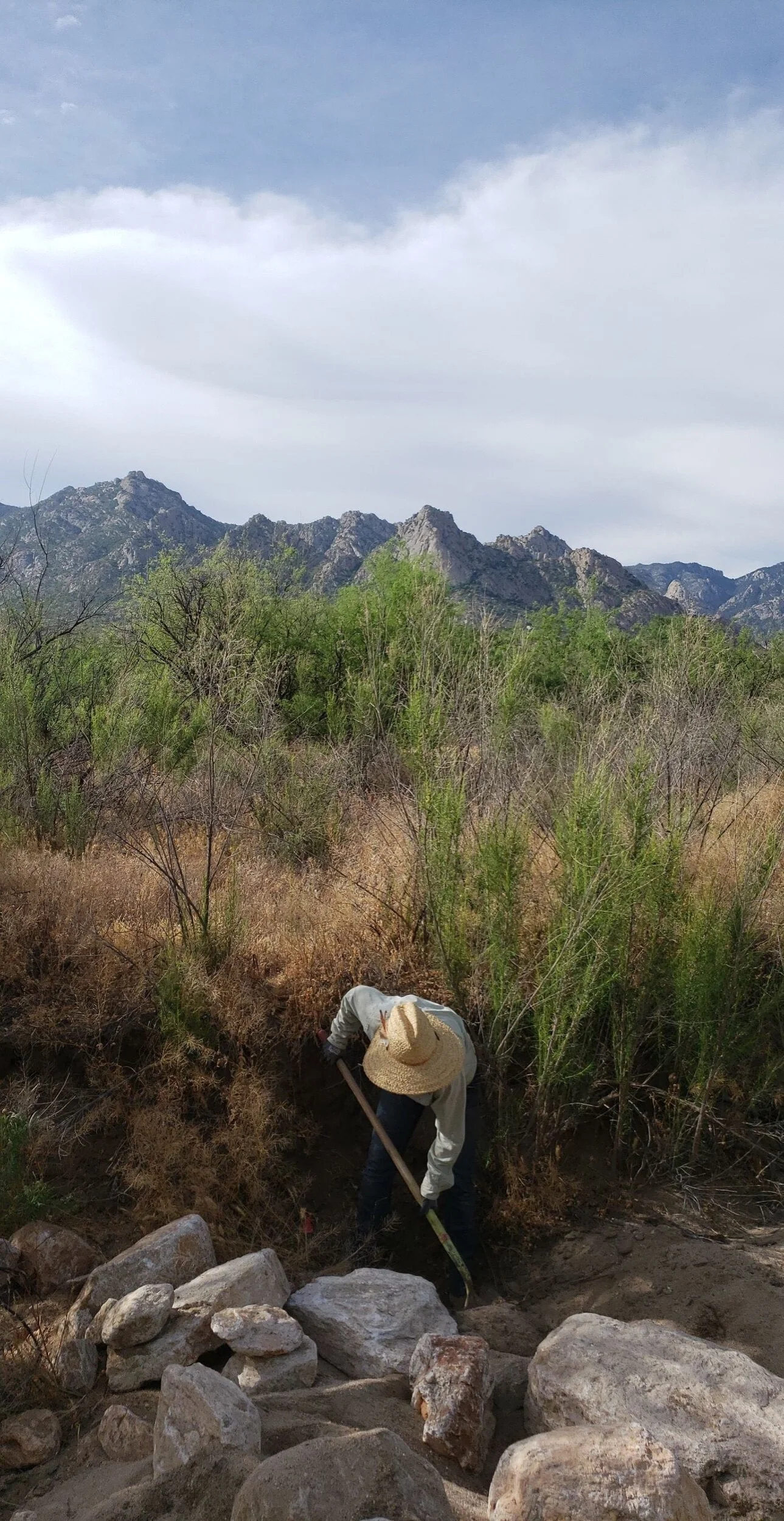RIPARIAN RESTORATION
RIPARIAN RESTORATION
Loose rock dams are structures designed to slow down runoff water and allow sediment settle out behind the dam. These dams are usually lowest in the middle and have rocks on either end keyed into the banks to reduce the chance of erosion. Often additional rocks are placed below the dam to reduce the scouring of the channel when water flows over it.
Dams are placed in the channel at intervals that are determined by site specific factors, but typically the bottom of one dam is level with the top of the next dam downstream. The increased availability of water and sediment deposits helps promote the establishment and growth of new vegetation, which also helps slow runoff and stabilize the channel and its banks. In some cases, the vegetation may continue the stabilization process upstream beyond the direct influence of the dams.




